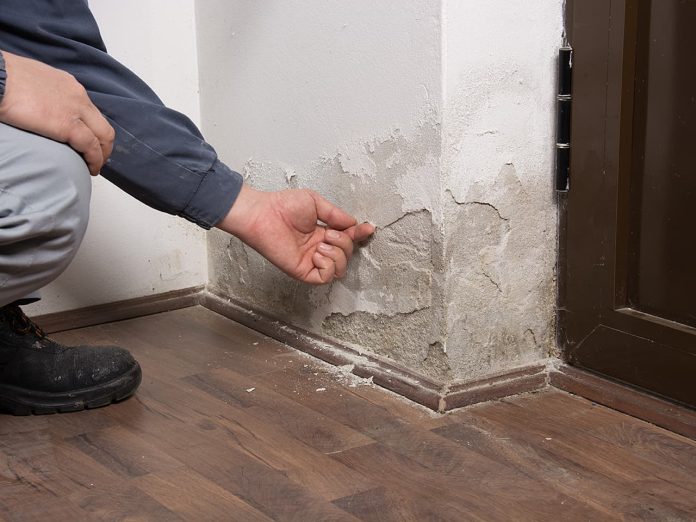There are several ways to treat damp walls internally. Some of these methods involve adding membranes to the walls before re-plastering. These are typically supplied on rolls, similar to wallpaper, and feature a dimpled surface to help prevent salt deposits. Another method involves increasing ventilation. However, this can be costly. Damp causes many health issues if your landlord does not repair these issues then damp claim compensation is available for you to hire an expert solicitor and claim compensation to your landlord.
Condensation
Condensation on damp walls is a common problem that can be treated easily. Condensation is formed on the walls due to the excessive moisture in the air. Often, it will occur on the outside facing walls of the home. However, this condition can affect any cold surface on the property. Condensation is particularly prevalent during the winter months.
The first step to treating condensation on damp walls is to assess the source of the problem. It can be caused by a variety of sources, from poor ventilation to inadequate surface water drainage. Some of these causes can be treated with waterproof paint, but some may require more extensive repairs. If your damp walls are due to masonry defects, then you may need to fix them with a suitable render. Alternatively, you may want to consider applying a masonry protection cream. This will help prevent rain from penetrating the walls and causing further dampness.
Excess moisture
There are a number of ways to treat damp walls internally. The first is to identify the source of the damp. It could be a leak or a chronic condensation problem. You could also try to add a damp proof course. You must remember that this will only mask the damp problem temporarily. You will need to treat the cause of the damp problem before you can paint over it.
There are many causes of dampness, so it is essential to determine the exact cause in order to find the best treatment. This will avoid any costly repairs and the chance of making the problem worse.
Penetrating damp
Penetrating damp is a common problem that occurs when outside moisture penetrates a building. This type of damp can lead to structural issues as well as significant fabric damage. If you suspect that you have penetrating damp, you should consider installing cavity wall insulation. You should also discuss the issue with the damp treatment company.
Penetrating damp can be caused by small cracks in the render or the brickwork itself. These small cracks can allow water to penetrate the wall and soak into the brickwork or mortar joints. Because older brickwork is more porous than newer bricks, it can absorb excessive moisture. If the walls are not treated, it can contribute to the growth of decaying timber. pre-action protocol for housing condition claim is clear for damp and mould or other disrepair issues you may also read this.
Increased ventilation
Damp walls are not only uninviting, they can be dangerous and pose health risks. Not only do they damage building materials, they also promote mould growth. Fortunately, you can often take steps to correct these issues yourself without the help of a professional. Here are five possible causes of damp walls and what you can do to resolve them.
A major cause of damp walls is poor ventilation. Buildings need constant air circulation to prevent a buildup of moisture in walls and other areas. When the airflow is restricted, moisture builds up and forms condensation.
Chemical mixtures
Damp walls can be a significant problem for homeowners. The atmosphere in a home can be negatively affected by damp patches, and mould spores on the walls can also be a health hazard. Furthermore, dampness can damage the timbers, plaster, and paint of a house.
There are a number of treatments that can help you to treat the problem. One of these is using a damp proofing gel. This is typically based on Siloxane, a type of chemical that reacts with the elements in the wall. This damp proofing gel can be applied to damaged plaster, which will help the walls to dry out.
Regular spot-checks
Regular spot-checks of damp walls are essential if you want to prevent a damp problem from spreading throughout your home. These checks can be performed by using a moisture meter, which measures the moisture content of a given area. These meters are portable and useful for internal and external checks. Moreover, regular spot-checks can identify damp patches before they lead to serious problems.
Inspecting walls for dampness is very important, as it will determine the best way to treat it. You should check whether the walls feel damp to the touch or have any signs of mould or fungus. Another important sign is the presence of peeling wallpaper. In addition, you should also check the ceilings to see if they have any discoloured patches.
External damp-proofing membranes
A variety of external damp proofing membranes can be used to treat damp walls internally. These materials can be applied by rolling them on the wall surface or by sponging them on with a sausage gun. They are effective at preventing water from rising through the walls, and can often last for twenty or more years.
These materials are most effective in areas where the internal floor level is lower than the external ground level. They can also be applied internally without the need for surface preparation, which is crucial for preventing expensive water ingress. However, they must be applied correctly to prevent water from penetrating the walls. It is also advisable to install a damp proof course in the outer walls before applying a damp proof membrane.






